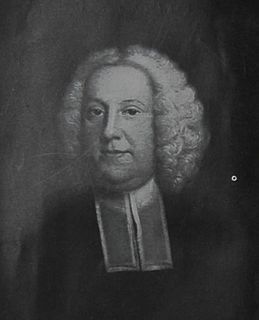Related Research Articles
Samuel Hartlib or Hartlieb was a polymath of German origin, who settled, married and died in England. He was a noted promoter and writer in fields that included science, medicine, agriculture, politics and education. He was a contemporary of Robert Boyle, whom he knew well, and a neighbour of Samuel Pepys in Axe Yard, London, in the early 1660s. He studied briefly at the University of Cambridge on arriving in England.

John Pell was an English mathematician and political agent abroad.
Thomas Vaughan was a Welsh clergyman, philosopher, and alchemist, who wrote in English. He is now remembered for his work in the field of natural magic.

János Apáczai Csere was a Transylvanian Hungarian polyglot, pedagogist, philosopher and theologian, famous for his work The Hungarian Encyclopedia, the first textbook to be written in Hungarian. The Encyclopædia Britannica calls him "the leading Protestant scholar and writer" of 17th-century Hungary.
George Starkey (1628–1665) was a Colonial American alchemist, medical practitioner, and writer of numerous commentaries and chemical treatises that were widely circulated in Western Europe and influenced prominent men of science, including Robert Boyle and Isaac Newton. After relocating from New England to London, England, in 1650, Starkey began writing under the pseudonym Eirenaeus Philalethes. Starkey remained in England and continued his career in medicine and alchemy until his death in the Great Plague of London in 1665.
A Christian Hebraist is a scholar of Hebrew who comes from a Christian family background/belief, or is a Jewish adherent of Christianity. The main area of study is that commonly known as the Old Testament to Christians, but Christians have occasionally taken an interest in the Talmud, and Kabbalah.
John Dury was a Scottish Calvinist minister and an intellectual of the English Civil War period. He made efforts to re-unite the Calvinist and Lutheran wings of Protestantism, hoping to succeed when he moved to Kassel in 1661, but he did not accomplish this. He was also a preacher, pamphleteer, and writer.

Campegius Vitringa Sr., or Kempe Vitringa was a Dutch Protestant theologian and Hebraist. His youngest of four children was Campeius Vitringa (1693-1723).
Edward Brerewood was an English scholar and antiquary. He was a mathematician and logician, and wrote an influential book on the origin of languages.

Robert Venables, was an English soldier from Cheshire, who fought for Parliament in the 1638 to 1651 Wars of the Three Kingdoms, and captured Jamaica in 1655.
Francis Mason (c.1566–1621) was an English churchman, archdeacon of Norfolk and author of Of the Consecration of the Bishops in the Church of England (1613), a defence of the Church of England and the first serious rebuttal of the Nag's Head Fable put about as denigration of Matthew Parker and Anglican orders.
The Hartlib Circle was the correspondence network set up in Western and Central Europe by Samuel Hartlib, an intelligencer based in London, and his associates, in the period 1630 to 1660. Hartlib worked closely with John Dury, an itinerant figure who worked to bring Protestants together.
Gabriel Plattes (c.1600–1644) was an English writer on agriculture and science, and also now recognised as the author of the utopian work Description of the Famous Kingdome of Macaria, often attributed to Samuel Hartlib under whose name it was published.
Gerard Boate was a Dutch physician, known for his Natural History of Ireland.
Katherine Jones, Viscountess Ranelagh, also known as Lady Ranelagh, was an Anglo-Irish scientist in seventeenth-century Britain. She was also a political and religious philosopher, and a member of many intellectual circles including the Hartlib Circle, the Great Tew Circle, and the Invisible College. Her correspondents included Samuel Hartlib, Edward Hyde, William Laud, Thomas Hyde, and John Milton. She was the sister of Robert Boyle and is thought to have been a great influence on his work in chemistry. In her own right she was a political and social figure closely connected to the Hartlib Circle. Lady Ranelagh held a London salon during the 1650s, much frequented by virtuosi associated with Hartlib.
William Rand was an English physician who projected general reforms in medical education, practice and publication. His views were Paracelsian and Helmontian, and he participated in the Hartlib Circle.
Matthew Slade (1569–1628) was an English nonconformist minister and royal agent, in the Netherlands by 1600 and active there in the Contra-Remonstrant cause.
Paulus Aertsz van Ravesteyn was a Dutch printer who worked for local publishers, individuals and also published books himself. At his May 19, 1608, marriage to Elisabeth Sweerts in Amsterdam he is said to be a 21-year old typesetter from Dordrecht. Possibly he originated from North Brabant where his family owned land. His first own publication dates from 1611.
Robert Child (1613–1654) was an English physician, agriculturalist and alchemist. A recent view is that his approach to agriculture belongs to the early ideas on political economy.

The Proceedings between Sankey and Petty is a pamphlet that contains a summary of the controversy that arose between Sir Hierom Sankey and Sir William Petty in the aftermath of the Down Survey. Sankey accused Petty of bribery and fraud. One of the ways in which Petty answered to this accusations was by this pamphlet, that was published in print by Petty in 1659 and covers a total of ten pages.
References
- 1 2 Hessayon, Ariel (January 2008). "Jhones, Basset (b. 1613/14)". Oxford Dictionary of National Biography . Oxford University Press . Retrieved 5 March 2009.